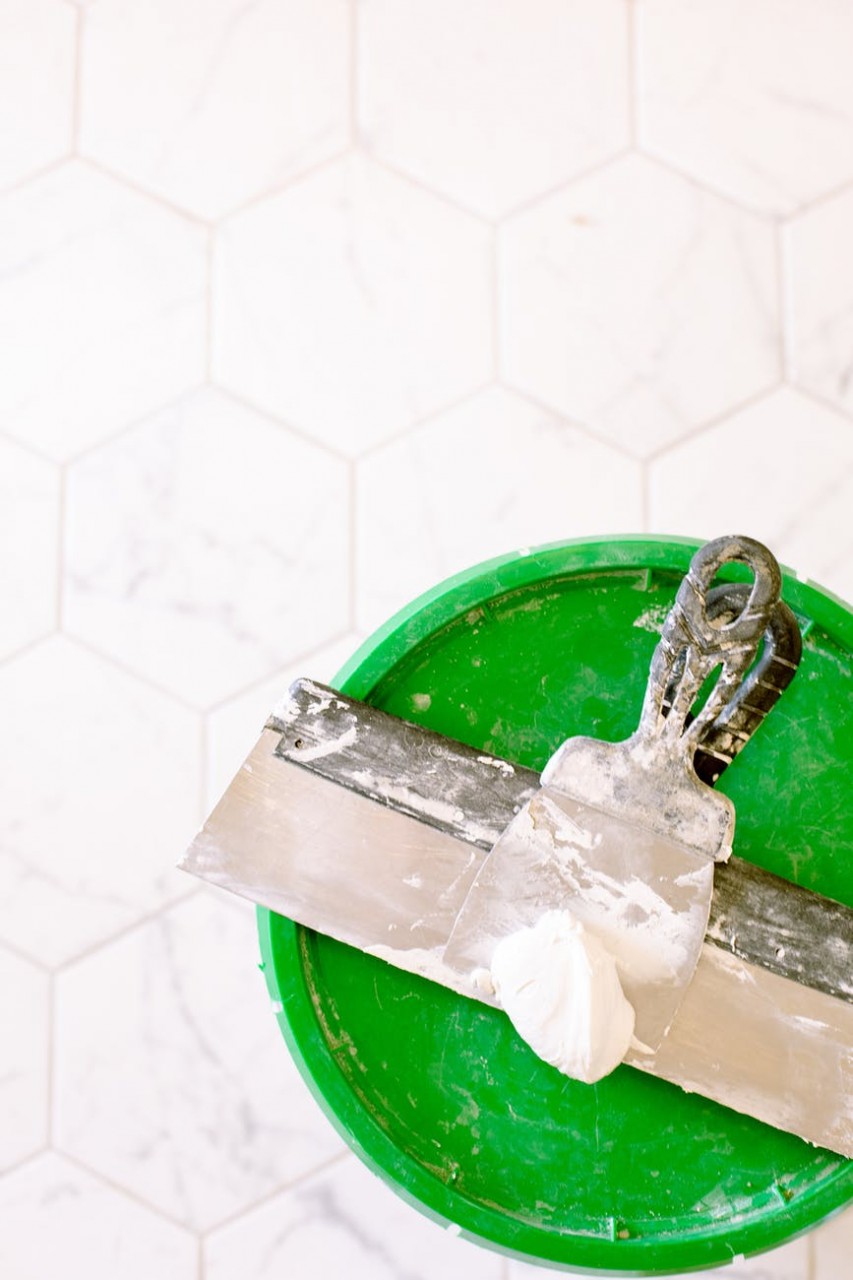
Woemmel Plastering Shares Different Types of Plasters and Their Correct Applications
October 19, 2021 – Woemmel Plastering, specialists in Plastering molds and designs, has gathered a reputation for its excellent handiwork. Based in St. Louis, the 85-year-old company has assisted homeowners and commercial clients with dedication and premium quality services. Their ornamental plastering molds have become a trademark in the cities most premium establishments.
Plaster is a construction material that is used to coat and protect inner walls and ceilings and sometimes is even used on outdoor walls. Types of plasters and their proper application are as follows:
1. Browning plaster: An undercoat plaster, is typically used as a base for paint and other decorative activities. It bears a similarity to bonding plaster but is most suited to porous surfaces. Builders normally apply browning plaster at around 8mm thickness for ceilings and 11mm thickness for walls.
2. Thistle plaster: This is a finish coat applied at the end of the plastering process. It is one of the most popular types of finish plasters, being versatile and convenient to use. Thistle plaster can be applied by hand or with a mechanical tool.
3. Hardwall plaster: Being an undercoat plaster, Hardwall is most commonly used with masonry settings like bricks and medium-density blocks. Hardwall is a popular base, one of the reasons being its easy application.
4. One-coat plaster: It can act as both an undercoat and a finish. It requires fewer steps, is incredibly easy to use, and can be applied by hand or with the help of mechanical tools.
Plaster Types Overview
Plaster is a versatile material used in the construction industry for its ability to create smooth, durable surfaces. There are several types of plasters available, each with its own unique properties and applications.
Lime Plaster
Lime plaster has been used for centuries and has a long history in construction. It is composed of lime, sand, and water, creating a mixture that is breathable and flexible for plaster application and residential plaster repair. This allows moisture to evaporate from the walls, preventing the buildup of dampness and mold. Lime plaster also has the ability to expand and contract with temperature changes, making it ideal for older buildings that may experience movement over time. Its historical significance can be seen in many ancient structures that have stood the test of time.
Gypsum Plaster
Gypsum plaster is known for its unique properties that make it an excellent choice for interior walls and ceilings. It is made from gypsum powder mixed with water to form a paste that can be easily applied. One of the advantages of gypsum plaster is its relatively short setting time, allowing for faster completion of projects. Gypsum plaster provides a smooth finish that requires minimal sanding or surface preparation before painting or wallpapering.

Cement Plaster
Cement plaster is widely used in modern construction due to its strength and durability. It is composed of cement, sand, and water, creating a strong adhesive mixture that can be applied to various surfaces. Cement plaster offers excellent water-resistance, making it suitable for both interior and exterior applications. Its versatility allows it to be used on different substrates such as concrete, brickwork, or metal lath. With proper application and maintenance, cement plaster can provide long-lasting protection against weathering and wear.
Specialty Plasters
In addition to the traditional plasters mentioned above, there are also specialty plasters available that cater to specific needs and aesthetic preferences. These include acrylic plaster, polymer-modified plaster, and clay plaster, among others. Each specialty plaster has its own unique composition and characteristics that make it suitable for specific applications. For example, acrylic plaster is known for its excellent weather resistance and color retention, making it a popular choice for exterior finishes. Clay plaster, on the other hand, offers a natural and breathable option with its earthy texture and ability to regulate humidity.
Correct Application Techniques
Surface Preparation
Thorough surface preparation is essential for achieving a high-quality plaster finish. Before applying plaster, it is crucial to ensure that the surface is clean, dry, and free from any loose debris or contaminants. This step not only ensures better adhesion of the plaster but also helps in preventing cracks and other imperfections.
The process of preparing surfaces for plastering involves several steps. Firstly, any existing wallpaper, paint, or loose plaster needs to be removed. This can be done using a scraper or a wire brush. Next, any holes or cracks in the surface should be filled with an appropriate filler material and sanded down to create a smooth and even surface.
Once the surface is clean and repaired, it should be primed with a suitable primer. The primer helps in creating a bond between the surface and the plaster, ensuring better adhesion. It also helps in preventing moisture penetration and promotes an even drying process.
Proper surface preparation plays a significant role in determining the overall quality of the plaster finish. Neglecting this step can lead to issues such as poor adhesion, cracking, and uneven drying of the plaster.
Mixing Methods
The correct mixing of plaster is crucial for achieving the desired consistency and texture of the mix. There are different methods for mixing plaster, depending on the type of plaster being used.
One common method is hand mixing, which involves combining water with powdered plaster in a clean bucket or trough. The mixture should be stirred continuously until it reaches a smooth and lump-free consistency. It is important to follow the manufacturer’s instructions regarding the water-to-plaster ratio to ensure accurate mixing.
Another method is mechanical mixing, which utilizes a power mixer or drill with a paddle attachment. This method allows for faster and more efficient mixing of larger quantities of plaster. Again, it is important to follow the manufacturer’s guidelines for water-to-plaster ratio and mixing time.
Achieving the ideal consistency and texture of the plaster mix is crucial for a successful application. The plaster should be smooth and creamy, allowing for easy spreadability on the surface. A properly mixed plaster ensures better workability, adhesion, and overall finish.
Application Process
The application of plaster involves a step-by-step process that requires precision and attention to detail. It is important to use the right tools and techniques to ensure an even and smooth finish.
Firstly, the plaster should be applied in thin coats rather than thick layers. This allows for better control and reduces the risk of cracking or sagging. A trowel or a hawk and trowel combination can be used to apply the plaster onto the surface.
During the application process, it is important to work quickly but efficiently to prevent the plaster from drying too fast. The plaster should be spread evenly across the surface using long sweeping motions. Any excess plaster can be removed using a trowel or scraper.
Common mistakes to avoid during the application process include applying too much pressure while spreading the plaster, which can lead to unevenness, as well as overworking the plaster, which can cause it to dry too quickly.
Importance of Proper Plastering
Quality Assurance
Quality assurance plays a crucial role in ensuring successful plastering projects. It involves implementing measures to maintain consistency and uniformity in plaster application, resulting in a durable and aesthetically pleasing finish. To achieve quality assurance, several key steps should be followed.
Firstly, it is essential to prepare the surface properly before applying the plaster. This includes removing any loose debris, cleaning the area thoroughly, and repairing any cracks or imperfections. By addressing these issues beforehand, you can ensure a smooth and even surface for the plaster to adhere to.
Secondly, selecting the right type of plaster for the specific application is vital. Different plasters have varying properties and are designed for specific purposes. For example, gypsum-based plasters are commonly used for interior walls, while cement-based plasters are more suitable for exterior surfaces. By using the correct type of plaster, you can enhance its performance and longevity.
Thirdly, regular inspections and tests should be conducted throughout the plastering process. Inspections help identify any potential issues or defects early on, allowing for timely corrections. Tests such as adhesion tests and moisture content checks ensure that the plaster is applied correctly and will withstand environmental factors.
By adhering to these quality assurance measures, you can minimize the risk of future problems such as cracking or peeling of the plaster. It also ensures that the finished result meets industry standards and customer expectations.
Longevity and Durability
The longevity of plaster finishes depends on various factors, including the type of plaster used, proper maintenance practices, and environmental conditions. Understanding these factors can help you select the most suitable plaster for your project and prolong its lifespan.
Different types of plasters offer varying levels of durability over time. For instance, lime-based plasters have been used for centuries due to their exceptional durability. They have excellent breathability properties that allow moisture to escape from walls without causing damage. On the other hand, cement-based plasters are highly resistant to impact and weathering, making them ideal for exterior applications.
To maintain and prolong the lifespan of plaster surfaces, regular maintenance is crucial. This includes cleaning the surface regularly to remove dirt and debris that can cause discoloration or deterioration. It is also important to address any cracks or damages promptly to prevent further deterioration.
Applying a protective coating or sealant can further enhance the durability of plaster finishes. These coatings act as a barrier against moisture, UV rays, and other environmental factors that can degrade the plaster over time.
Woemmel’s Expertise Benefits
Residential Projects
When it comes to plastering in residential settings, there are specific considerations that need to be taken into account. One of the main factors is the type of plaster that should be used. Different areas of a residential property may require different types of plaster, depending on their function and location. For example, in wet areas such as bathrooms and kitchens, it is important to use moisture-resistant plaster to prevent damage from water exposure. On the other hand, in living areas and bedrooms, a standard gypsum-based plaster may be sufficient.
In recent years, there have been several popular trends in residential plastering. One such trend is the use of textured finishes, which can add depth and visual interest to walls. Textured finishes can range from subtle patterns to more dramatic designs, allowing homeowners to customize their space according to their preferences. Another trend is the use of decorative plaster moldings and cornices, which can enhance the architectural features of a room and give it a more elegant and sophisticated look.
To illustrate successful residential plastering projects, let’s take a look at two examples. In a modern farmhouse-style home, smooth white plaster walls were used throughout the interior to create a clean and minimalist aesthetic. The smooth finish provided a perfect backdrop for the homeowner’s eclectic mix of furniture and decor. In another project, an old Victorian-era house was restored to its former glory with the help of skilled plasterers. Intricate ornamental plasterwork was meticulously recreated to match the original design, showcasing the craftsmanship and attention to detail that went into the restoration process.
Commercial Projects
Plastering requirements for commercial projects differ significantly from those for residential settings. Commercial buildings often have larger spaces that require more extensive plastering work. Commercial environments may have unique needs such as fire resistance or soundproofing that must be addressed during the plastering process.
The scale and complexity of plastering in commercial settings can be seen in projects like shopping malls, hotels, and office buildings. These structures often feature expansive walls and ceilings that require skilled plasterers to ensure a seamless and professional finish. In some cases, specialized plasters may be used to meet specific requirements. For example, in a hotel lobby where soundproofing is crucial, acoustic plaster can be applied to absorb sound and reduce echo.
To highlight notable commercial plastering projects, let’s consider two case studies. In a newly constructed shopping center, the interior walls were finished with polished Venetian plaster. This high-end finish not only added a touch of luxury but also provided durability and easy maintenance for the busy retail environment. In another project, an office building underwent a complete renovation, including the restoration of its historic plaster ceilings. Skilled craftsmen carefully repaired damaged areas and replicated intricate decorative patterns to preserve the building’s original character.
Repair Mastery and Techniques
Crack Repairs
Cracks in plaster surfaces can be caused by a variety of factors, including settling of the building, temperature fluctuations, or even poor construction practices. It is important to address these cracks promptly to prevent further damage and maintain the structural integrity of the plaster.
One effective method for repairing cracks in plaster is to use a technique called “stitching.” This involves drilling holes on both sides of the crack and inserting metal dowels or screws to hold the plaster together. Once the plaster is secured, it can be reinforced with additional layers of plaster or joint compound to ensure a seamless finish.
Another common method for crack repairs is known as “skimming.” This technique involves applying a thin layer of joint compound or plaster over the entire surface, filling in any cracks or imperfections. The skim coat is then sanded smooth, creating a seamless appearance.
It is important to note that before any repairs are made, it is essential to identify and address the underlying cause of the cracks. Failure to do so may result in recurring cracks and further damage to the plaster surface.
By addressing cracks promptly and using appropriate repair techniques, you can restore the integrity and beauty of your plaster surfaces.
Surface Restoration
Restoring old or damaged plaster surfaces requires careful attention to detail and specialized techniques. Whether you have a historic home or simply want to preserve the original aesthetics of your plaster walls, surface restoration can breathe new life into your space.
One key aspect of surface restoration is preserving the original texture and design elements of historic plaster. This may involve replicating intricate moldings or decorative features using custom-made molds. Skilled artisans can recreate these details using traditional materials such as lime-based plasters, ensuring an authentic restoration.
Successful plaster restoration projects often involve a combination of patching, skimming, and blending techniques. Patching involves filling in areas where sections of plaster have deteriorated or fallen off. Skimming, as mentioned earlier, is the process of applying a thin layer of plaster or joint compound to create a smooth surface. Blending techniques are used to seamlessly integrate new plaster repairs with the existing surface.
Examples of successful plaster restoration projects can be found in historic buildings and landmarks around the world. These projects showcase the craftsmanship and expertise required to bring deteriorated plaster surfaces back to their former glory.
The company began by servicing small residential establishments, and to this day, they remain a vital part of the business. While smaller projects allow the company to provide homeowners with detail and customization, larger projects enable them to create a steady style. The company’s clientele includes St.Louis Zoo, Missouri Historical Society, Fox Theatre, Saint Louis University, Washington University, Federal Reserve Saint Louis, Discovery Elementary, Hillsboro Intermediate, and Villa Farrato’s Restaurant.
For more information, please visit: https://woemmelplastering.com/
Media Contact
Company Name: Woemmel Plastering Company, Inc.
Contact Person: Scott Eagle
Email: Send Email
Phone: (314)781-9010
Address:5751 Dale Ave
City: St. Louis
State: MO 63110
Country: United States
Website: httpss://www.facebook.com/WoemmelPlastering/

